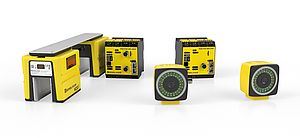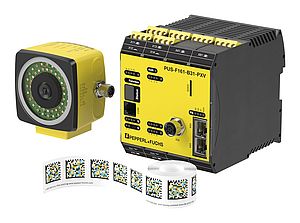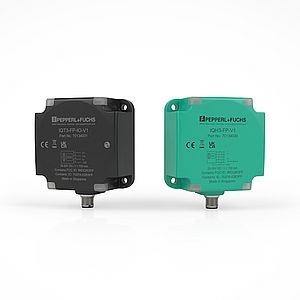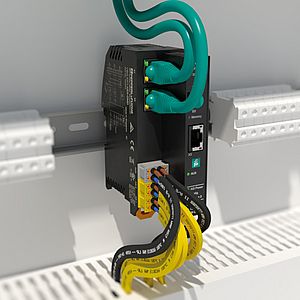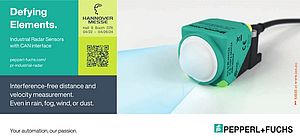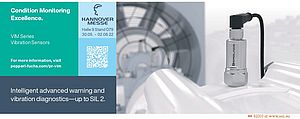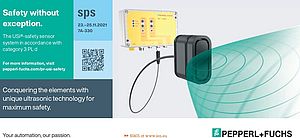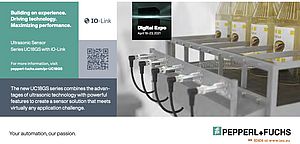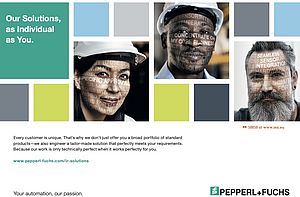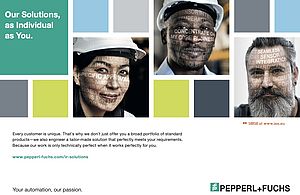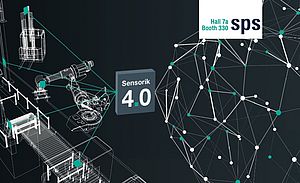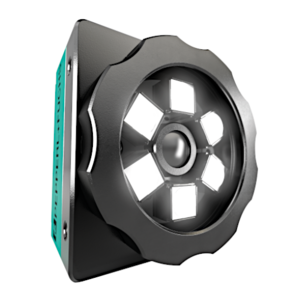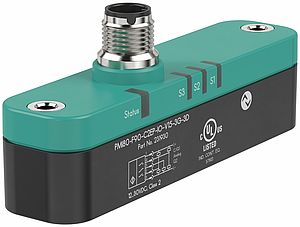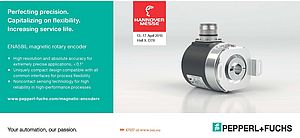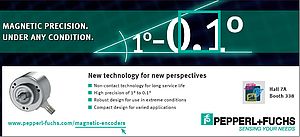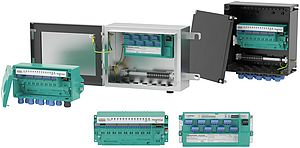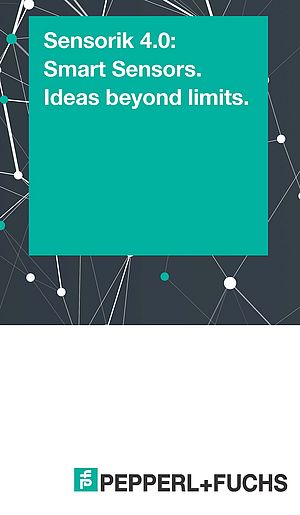The units are mobile or located far away from the controlling headquarters; changes in status occur only rarely or very gradually – in any case, cabling is out of the question for geographical and cost reasons. The occasional inspection or regular startup of the assets is part of the usual routine, whether it is necessary or not. This situation has so far been a natural limitation for all further automation steps.
Long-term Operation with License-Free Wireless Technology
With WILSEN wireless sensors, this limitation can be easily overcome: The devices do not require a cable connection and can be used virtually anywhere. The central unit can be combined with sensors for various tasks, and contains the wireless connection technology and an integrated GPS receiver for position determination. The central unit's power supply, which also feeds the sensors, comes from a powerful lithium battery with a service life of up to ten years. The WILSEN devices use the manufacturer-independent Long Range Wide Area Network (LoRaWAN) on a license-free frequency band to communicate with the control room or an assigned IoT platform. This wireless technology is available globally, is highly energy efficient, and therefore provides optimal conditions for connecting the autonomous devices. The detection range in open areas can reach up to 15 kilometers, and the radio waves can penetrate building structures very well.
High Level of Data Security, Easy Configuration
The bidirectional wireless communication of WILSEN devices is subject to high security standards. The encrypted sensor data is received by LoRaWAN gateways, which then forward it via IP connections to the LoRa network server and to the application server of the responsible IoT platform. Once the data has reached the servers, decryption and further processing take place. End-to-end encryption and additional authentication reliably secure the data flow.
In addition to the measured values, this data includes diagnostic and ambient data. For example, the WILSEN devices report fault states such as a short circuit or lead breakage, and record temperature values and battery charge status. The devices therefore provide information about their own condition, which is necessary for maintenance planning. The free WILSEN app supports commissioning and configuration at the operating location via Bluetooth LE. Furthermore, the LoRaWAN downlink channel offers the option to perform remote parameterization via the LoRa network.
Wide Range of Sensor Versions
The WILSEN family consists of three device versions that can be used for different tasks:
- WILSEN.valve: The device is designed for position feedback from 90° hand lever valves. It features connections for inductive dual sensors and can monitor two valves.
- WILSEN.node: This version can be combined with various 2-wire sensors with a wide range of technologies for object detection and fill level limit detection. It also enables the monitoring of two different process values.
- WILSEN.sonic: With this version, an ultrasonic sensor is integrated directly into the central unit, which measures the fill level in containers or water levels.
WILSEN devices are exclusively combined with energy-optimized sensors to ensure the longest possible battery life. For this, Pepperl+Fuchs offers a comprehensive and diverse range of suitable devices. Depending on the design of the central unit, inductive low-power 2-wire sensors and all NAMUR sensors can be connected, regardless of the sensor technology.
The interval for cyclic measurement and data transmission is selected by the user. An additional monitoring interval in the WILSEN.valve and WILSEN.node versions allows the statuses of the connected sensors to be checked more frequently and status changes to be reported immediately after detection, regardless of the set control interval. The WILSEN devices feature a rugged outdoor housing with IP66/67 degree of protection and a wide temperature range of -25 °C to +70 °C, enabling use in harsh outdoor conditions. For the WILSEN.valve and WILSEN.node, the cable length between the central unit and sensors can be up to 10 meters.
WILSEN in Action
Object detection is the focus of the WILSEN. node product version. In addition, this device is suitable for combined detection of two different sizes. Inductive and capacitive devices are typically used, along with float and vibration limit switches. These sensor technologies are required in smart city and smart farming applications, among other things. The WILSEN.node uses the sensor technologies to check whether gates or transformer enclosure doors are closed, for example. An example application of combined detection of varying sizes is the manhole of a district heating distribution system: While an inductive sensor detects the closed state of the manhole cover, a float switch reports water ingress, as might occur during flooding or heavy rainfall, and triggers a response to begin pumping the water out. The autonomous design of the WILSEN devices means that they can be easily retrofitted to existing equipment.
Large-scale plants are found in the process engineering industry, and there are many decentralized units in municipal enterprises. Whether in the chemical sector or district heating, manual valves control the flow of the medium in such systems. The valves are rarely actuated and are not normally connected to an automation system. With the WILSEN.valve, this can be easily changed in non-hazardous areas. The device has standardized M12 connections for two inductive dual sensors for valve position feedback of up to two 90° manual valves. A wide range of accessories and comprehensive mounting kits simplify installation.
A highly rugged ultrasonic sensor is integrated directly into the central unit in the WILSEN.sonic. The WILSEN.sonic.level version reports the distance value in millimeters and the level value directly as a percentage, while the WILSEN.sonic.distance reports the distance value in millimeters and the amplitude strength of the received echo signal. The devices can monitor, for example, recyclable material collection containers, silos, and mobile tanks, or water levels in rainwater retention basins, lakes, and rivers. Based on the measured data, the route planning for emptying and refilling containers can be aligned with the actual demand. Measuring the water level helps in the precise planning of protection and evacuation measures.











